 |
American History
The Cabalgata of Christ the King
Hugh O’Reilly
In 1927 the Cristeros war started with the armed confrontation between the soldiers belonging to the Freemason government of President Elias Calles and the faithful Catholics who opposed it. Calles had outlawed the Catholic Church, rxiled the Bishops and clergy, and closed churches, schools and seminaries. He also had issued laws against landowners and peasants to claim rights to their properties.
The whole country was in religious and social turmoil: battles, skirmishes and guerilla warfare were daily fare throughout Mexico. As the number of enlisted volunteers for the Cristeros grew and their support and power increased, the government retaliated however it could.
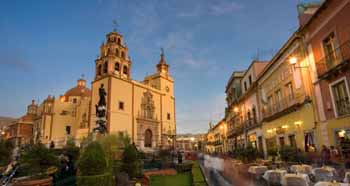
The Cathedral of Guanajuato in the old city is a gem in colonial style |
At that time Guanajuato was already one of the most beautiful and richest cities in central Mexico, due to its wealthy silver mines. A
grandiose monument in honor of Christ the King had been built in bygone times to honor the main devotion of that Catholic State, also named Guanajuato. This area was an important center of Cristero resistance. The government ordered an air raid to target the monument dedicated to Cristo Rey and it was bombed. The statue of Christ the King was destroyed, but its heart and head were miraculously preserved.
The heart and head of Catholic Mexicans was also preserved. The war ended, but their devotion was not destroyed. A shrine and another statue of Cristo Rey were built.
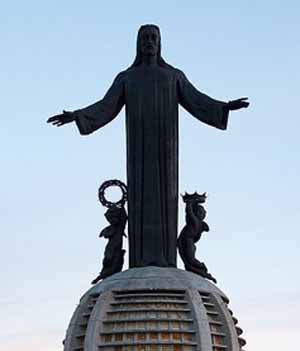
At the geographic heart of Mexico a monumental statue of Cristo Rey dominates Cubilete Mount |
The new statue, like the old one, crowns Cubilete Mountain (8,500 feet), the symbolic heart and geographical center of Mexico. In front of the art deco shrine is a large plaza lined by columns that was erected in 1944 to replace the ormer smaller one that used to be there. Atop the globe-shaped cupola is a majestic statue of Our Lord with his arms opened in a gesture of affection and hospitality. Soon after its completion, pilgrimages again began to that place so rich in symbolism and history.
As one recalls, the devotion to Cristo Rey was the primary devotion of the Cristeros, along with that of Our Lady of Guadalupe. Their rally cry was Viva Cristo Rey! Their special hymn repeated this salute several times. No wonder Calles wanted to destroy the symbol of that devotion. No wonder that the shrine honoring Christ the King continued to attract the multitudes, even after the war.
Indeed, from all over the State of Guanajuato, the survivors of the Cristeros epopee and their sons and grandsons mounted horses and rode to the shrine of Cristo Rey in Guanajuato to adore Our Lord, ask for special graces and etch more firmly in their souls memories of that glorious past.
They chose the date of Epiphany to make their pilgrimage to pay that homage. Nothing could be more appropriate, since this is this day the Catholic Church commemorates the Three Kings who traveled to Bethlehem to acknowledge the Kingship of the Divine Infant in the Manger. In this respect, the journey of the pilgrim riders marks another feast of Christ the King.
This movement of Mexican men riding their horses to the shrine of Cristo Rey is called the cabalgata of Guanajuato. It is a mixture of a pilgrimage and a procession on horseback that ends at the foothill of the Cubilete. There, in a solemn ceremony, the riders receive a special blessing during an outdoor Mass. After the Mass, the pilgrim riders rest, don clean clothes, and then ride up the mountain individually or in small groups to venerate the famous statue of Christ the King.
The photos below were taken from the 52nd and 53rd annual cabalgatas in 2007 and 2008.
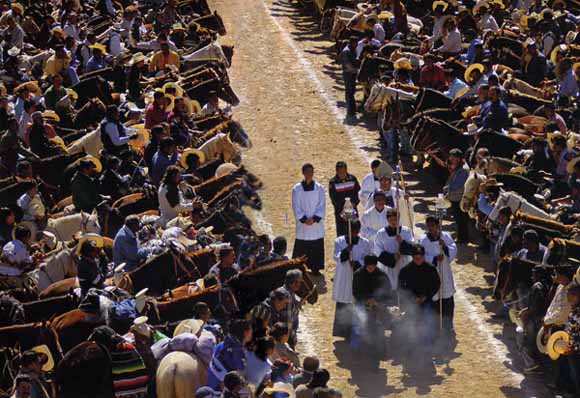
Upon arrival at the foothill, the pilgrims assist at Mass and receive a solemn blessing
|
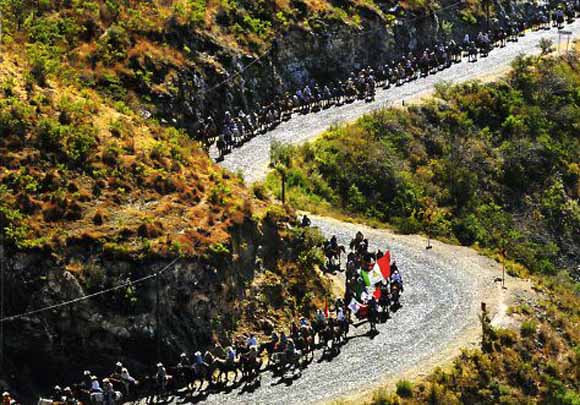
From throughout the State of Guanajuato - as well as many other states of Mexico and the U.S. - the pilgrims meet two days before Epiphany to ride together on pilgrimage to honor Christ the King
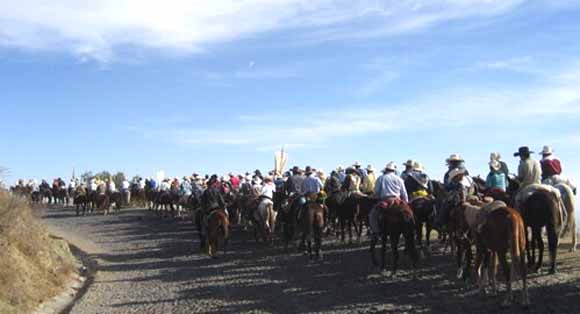
|
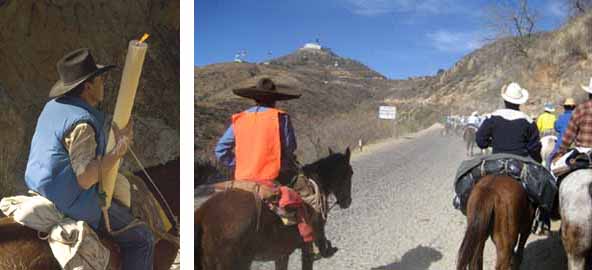
The pilgrim carries a large candle in his hand during the entire trip. At the end of the two-day ride, the pilgrims catch a glimpse of the statue of Christ the King. Some still wear the traditional Mexican sombrero and tilma.
|
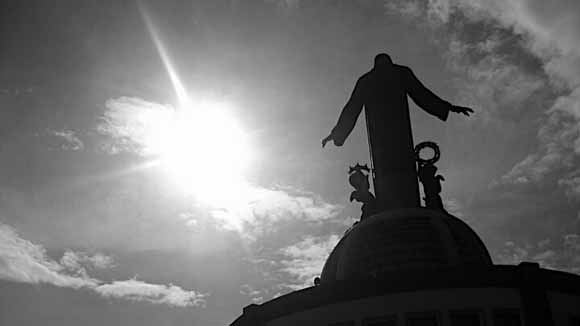
After homage is paid to Cristo Rey, these descendants of the Cristeros return to their homes proud of their Faith and Catholic past, certain that Our Lord is watching over them with renewed tenderness and care
Photos from National Geographic and Internet |

Posted July 10, 2009

Related Topics of Interest
 The Cristeros I: The Spaniards Land in Mexico The Cristeros I: The Spaniards Land in Mexico
 The Cristeros II: Long Live the Virgin of Guadalupe! The Cristeros II: Long Live the Virgin of Guadalupe!
 Catholicism in Colonial America Catholicism in Colonial America
 La Conquistadora: Our Country's Oldest Madonna La Conquistadora: Our Country's Oldest Madonna
 Ven. Antonio Margil of Jesus: Apostle of New Spain and Texas Ven. Antonio Margil of Jesus: Apostle of New Spain and Texas
 The Appeal of the Stones at San Juan Capistrano The Appeal of the Stones at San Juan Capistrano

Related Works of Interest
|
|
History | Home | Books | CDs | Search | Contact Us | Donate

© 2002-
Tradition in Action, Inc. All Rights Reserved
|
 |
|